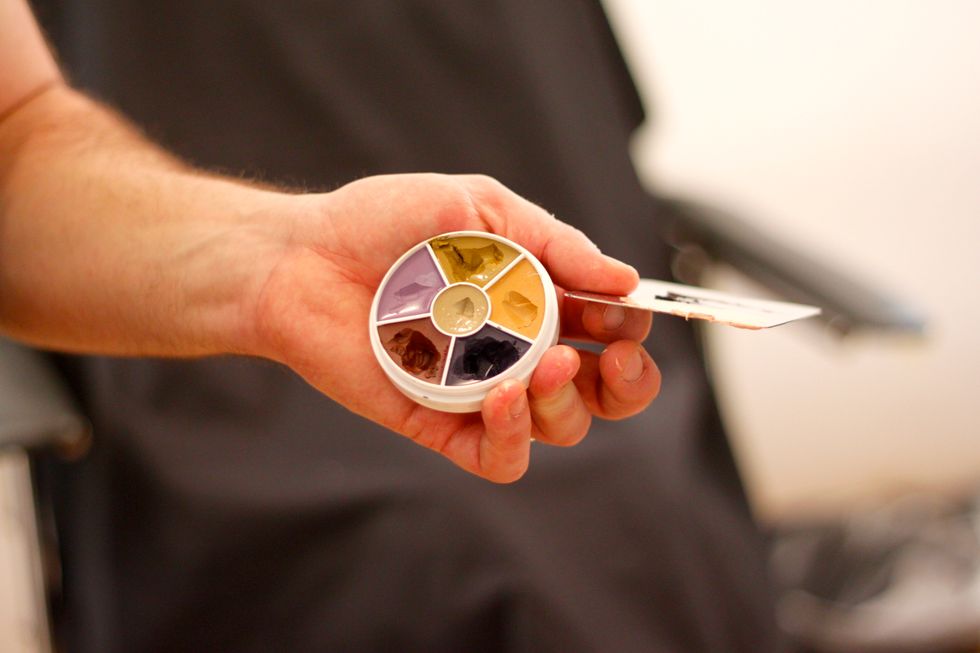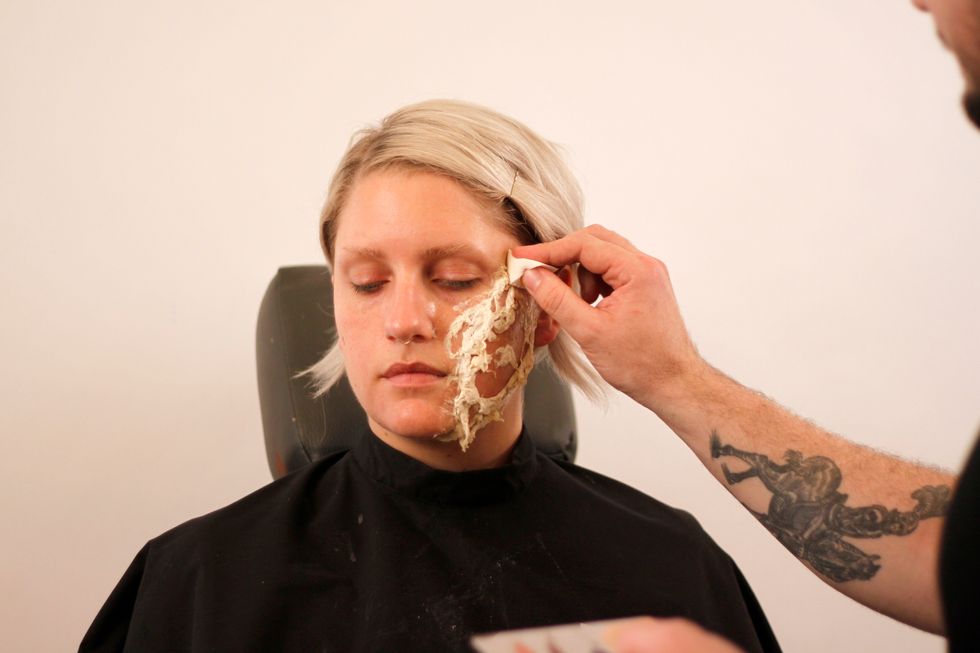STEPS
TOOLS

Gather your supplies. Here we have some cotton balls and liquid latex.

Dip a cotton ball in the liquid latex. You don’t need it sopping wet. Then start to tear it apart into workable pieces.

Start with clean skin. Spread torn cotton balls on the skin like the perimeter of a laceration. Build up texture, add layers, and have pieces hanging off like hanging bits of flesh.

Then take a make-up sponge dipped in liquid latex and dab all along the "wound" and skin.

Next tear apart some face tissue into single ply chunks.

Add face tissue onto the wet latex to build up and blend in the layers. You could even put rice krispies under the tissues to give it a more crusty, disgusting look.

Sponge on more liquid latex.

While it’s still wet, take a spatula and start to open up the center of the "wound." Make nice hanging bits of "flesh" and keep the center of the wound relatively hollow.

Make nice hanging bits of "flesh" and keep the center of the wound relatively hollow. It's fine to keep some layers in the center to make it appear chunky.

Then use one more coat of latex to seal everything in. Let it dry thoroughly (you can speed this part up with blow dryer).
Next seal the latex with a flexible sealer to prepare it for painting. You can't mix oil with latex, so remember to seal it in well so the latex doesn't degrade when we paint.


Here are some bruise tones you can work with: purples, browns, blacks, yellows, and greens.


Start with flesh and bruise tones.

Pro tip: break a sponge in half for a more even paint application.

Dab the wound with flesh tones, making sure to cover up all traces of cotton ball. Don't just stop at the latex; bring the color around the temple, cheek, and chin to blend it in to your face.

Start to fill in crevices with darker skin tones.

Stipple on darker bruise tones now, especially around areas like eyes which naturally bruise easily. It's OK to make it look spotty and blotchy. Use dark blue for severe bruising.

Now start to fill in the center of the wound with trauma colors, like bright vibrant reds.

Use darker colors around edges of the wound to create depth.

When you're done coloring, set the wound with setting powder to prep it for fake blood. Brush it on and blend it in so it doesn't remain visible.

Now take some "wound filler" which has the consistency of strawberry jam.

Take a spatula and layer it into the contours of the wound.

This is good for creating the chunky appearance of dried blood. Don't stop at the face- get the ears as well. Be creative with how far you take it.

Now take some FX blood, with a drippy consistency, and drip it onto the deepest areas of the wound.

Try to get some around the lips, dripping down the neck; however you think blood would drip out of a real wound. This may look dramatic, but it looks great in the dark.

Now spray with just a little bit of water to get some blood to drip down the face.

- Cotton balls
- Facial tissue
- Liquid latex
- Flexible sealer (for wax or latex)
- Kryolan Bruise Wheel (or bruise toned paints)
- Kryolan Burn & Injury wheel (or red-toned paints)
- Translucent setting powder
- Wound filler (chunky drying blood)
- FX blood (drippy blood)
- Synthetic bristled brush
- Latex sponge to tear in half
- Powder brush
- Spatula
- Paint palette
Kryolan Professional Make-Up
The professional make-up brand loved and used by make-up artists worldwide, producing high-end theater, stage, and costume make-up.
The Conversation (0)
Sign Up